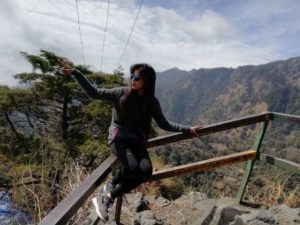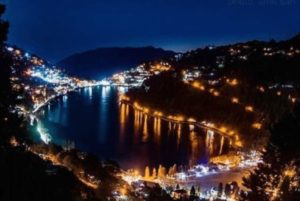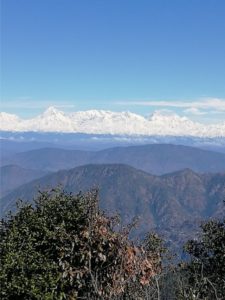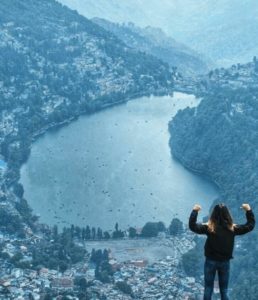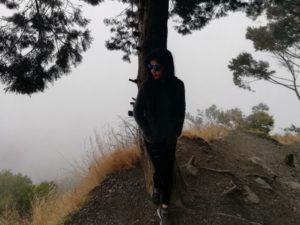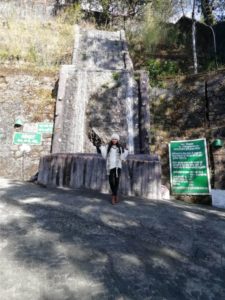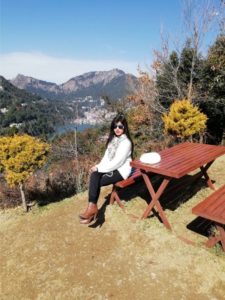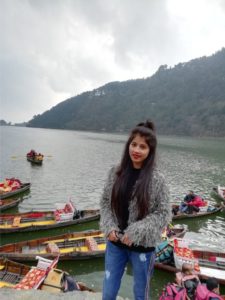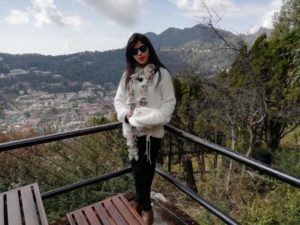Historical Facts | Interesting and fun facts about Nainital

- By
- Aparna Patel
- |
- 30 Nov, 2019
- |
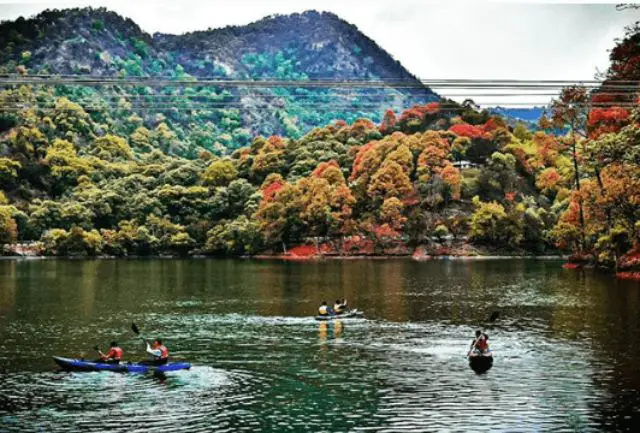
Nainital is called the lakeside town of India. It is located, in the Himalayan belt. It is situated in the middle of the Kumaon hills and is blessed, with beautiful lakes. Nainital is mentioned, in the Manas section of Sri Skanda Purana as ‘Lake of three saints’ or ‘Tri-sage-lake. The three saints, named Atri, Pulastya, and Pulah, stayed in Nainital to quench their thirst but found no water anywhere, then they dug a pit and filled the pit with water brought from Mansarovar Lake. Since then, that famous lake called ‘Nainital’ came into existence. Another legend states that the left eye of the Hindu goddess Sati (consort of Lord Shiva) fell at that place, which led to the creation of this eye-shaped Naini lake.
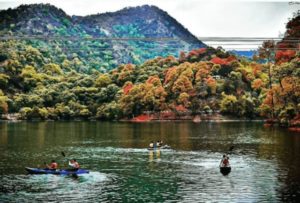
Nainital is located, at an elevation of 1938 meters above sea level. Nainital India is also known as ‘Lake District‘ due to some 60 lakes spread across its borders. A small town in the hills of Kumaon, Nainital is a beautiful hill station surrounded by mountains on three sides. Every year lakhs of tourists are drawn to see the beauty of this city. Although you must have heard about the famous sites of Nainital, there are many things about that small city with a population of merely 35 thousand, which you may not have known or would have never noticed.
Nainital has some hilly terrain, which is a center of attraction for tourists in the city and its surrounding areas. These include Naina Peak, Tiffin Top, and Snow View Point, all of which are highly popular tourist destinations. Travelers planning a trip to Nainital can visit Hanumangarhi, which is famous for a temple dedicated to the Hindu god Hanuman. Also, the Naina Devi Temple is an important religious site, which is, counted among the 51 Shakti Peethas of India. Through this post, it is my endeavor that I can reach you such facts related to Nainital, which you may not have known, before.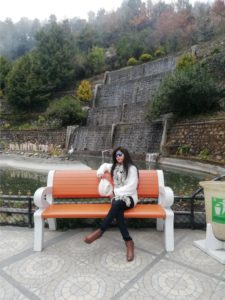
Table of Contents
Amazing Famous Facts About Nainital For Tourists and Kids
- The color-changing lake Khurpatal– Khurpatal lake is just 10 km from Nainital.The special thing about this lake is that the lake starts changing its color as soon as algae seeds are formed.
- The Raj Bhavan of Uttarakhand was, built for the Governor of the United Provinces.
- The Raj Bhavan, of Uttarakhand which is, located in Nainital was, built for the Governor of the United States.
- Naina Devi Temple has been situated, on the banks of the lake since ancient times.
- The British moved the capital because the climate and location are like Cumbrian.
- Lake Nainital at, the northern end of the city receives rains almost every afternoon.
- Nainital district has one of the oldest golf courses in India dating back to 1926 and has 18 holes.
- Nainital is situated, in a set of valleys that contain a peer-shaped lake, which is about two miles in circumference and is surrounded by mountains.
- Which is named Naina (2,615 m) in the north, Ayodhya (2,438 m) in the west
- It had a sufficient number of lakes such as Bhimtal, Sattal, Khurapatal, and Naukuchinya Tal
- Nainital is also called the lake district of India, it is similar to the Cumbrian in Britain.
- Located a few kilometers from the city of Nainital, Naukuchi Tal is a lake with 9 corners.
- Nainital Zoo is a high altitude zoo where you can see snow leopard or Siberian tiger, both are critically endangered species.
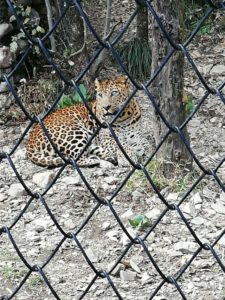
- Jim Corbett lived here and his house is now open to visitors. It is called the house of the Gurni.
- Jim Corbett National Park in Nainital district is the oldest national park in India which was, established in 1936 for the conservation of tigers.
- Aka Aryabhatta Research Institute of Observation Sciences is one of the largest and oldest observatories in India.
- Seven peaks of this place have special significance in enhancing the beauty of Nainital. Naina Peak or China Peak is 2611 meters high among the seven peaks.
- India’s largest dam “Tehri Dam” is located, in Tehri district of Uttarakhand. It is built, on the river Bhagirathi.
- The world’s highest Shiva temple “Tungnath” is located in Rudraprayag district of Uttarakhand. It is 12073 ft above sea level. It is believed that this temple is more than 1000 years old.
- India’s first agricultural university is “Govind Ballabh Pant University of Agriculture and Technology” in Uttarakhand.
22. Upper Mall & Lower Mall
The specialty of every hill city is that there is a road named Mall Road. But Nainital has not one but two Mall Roads – Upper Mall and Lower Mall, which were built in the British era. Under British rule, the Upper Mall Road was exclusively for the English people, and the Lower Mall Road was for the regular Indians. If an Indian stepped on the Upper Mall Road, he was, punished.
24. Tallital and Mallital
In Kumauni language, Talli means below and, Malli means above, hence the area under the lake is called Tallital and, the area above is called Mallital.
25. Construction of Flats Ground
Today where the flats are ground there used to be, a lake till there. In the year 1880, there was a landslide in the northern hill of the city, and a lot of debris from the hill came down, which engulfed a lot of the lake, and the Devi temple was, also damaged in that landslide. Naina Devi Temple has been on the banks of the lake since ancient times, so the temple was, set up a few meters further on the banks of the lake, and the flats ground was, formed from the debris that came from the landslide.
26. Capital of United Province
Very few people know that Nainital used to be the summer capital of the United Provinces during the British period. The Raj Bhavan of Uttarakhand, which is, located in Nainital, was built for the governor of the United Provinces. Due to the scorching weather of the city of Lucknow, the British used to spend most of their time in Nainital.
27. Founder of Modern City
Though the existence of Nainital dates back to the mythological period, the credit of settling modern Nainital city is attributed, to P Baron, an English businessman. P. Baron was a Chinese businessman and was very fond of wandering in the mountains. Once he had set out on a trip to the Himalayas and, rested at a place called Khairna, where he met a local youth. The young man told that the hill in front is called “Lion’s Tanda” and on the other side of which there is a wonderfully beautiful lake. The barons who are fond of seeing the natural scenery reached Nainital with the help of the local people and were enchanted by seeing the beauty of the place and decided on the same day that they would now settle in the beautiful city of Nainital.
28. Private Rain
The weather in Nainital always changes due to the lake. You can not guess what the weather will be like, after 15 minutes, it is sunny, then after some time, change from the lake and start raining. If it is raining heavily in Mallital, it will be sunny on, the snow view, you come out of Kumaon University thinking that the weather is clear today, but the rain soaks you till you reach Tallital.
29. Lake District of India
Like the Cumbrian Lake District of Great Britain, the Nainital district is called the Lake District of India. Like the Cumbrian Lake District, the entire Nainital district has many freshwater lakes such as Bhimtal, Satatal, Khurpatal, and Naukuchiatal. The geographical conditions and climate of Nainital are very similar to the Cumbrian Lake District of Great Britain, which was the main reason for the attachment of English people to Nainital.
30. Communal harmony
Uttarakhand, including Nainital, is a manifestation of communal harmony, Nainital is a mirror of ancient Indian traditions that shows us how different forms of worship have been, adopted throughout India before the Middle Ages. There was never Mughal rule in Nainital and the rest of the mountainous parts of Uttarakhand, which is the reason that the foreign ideology that came in, the medieval era, “Only our Dharam or our method of worship is right and all other Dharam or worship method is wrong” The original inhabitants of Nainital never encountered the Arabic ideology.
Therefore, before and after independence, when people of different faiths came to settle in Nainital, the residents welcomed the arms openly. Today, Nainital is one such city in the country where temples, mosques, gurudwaras, and churches are located within, a radius of 1 km. Festivals of all religions are, celebrated according to their religious beliefs, but the news of a minor violent clash has never been, reported to date. Which is a very great thing.
31. A dream that never came true
After connecting Shimla and Darjeeling by rail, the British Raj also wanted to connect Nainital with the rail route. For this, a survey was, done and it was, found that Nainital has more chances, of landslides than Shimla and Darjeeling. Therefore, the British government decided to use a unique technology to construct the Nainital railway line. But before that plan was, implemented, India got freedom from, British rule and the dream of traveling from Kathgodam to Nainital by train remained a dream.
Watch Nanital video in HD:
General facts about Nainital
- Country – India
- State – Uttarakhand
- District – Nainital District
- Elevation – 2,084 m (6,837 ft)
- Languages – Hindi and Kumaoni.
- Sex Ratio – 948emale(♀) on male 1000(♂)
- Males Population (2011) – 194,409
- Female Population (2011) – 177,325
- Population – (2011) 41,377
- Literacy Rate – (2011) 82.99 %
- Climate Minimum Temp – 2°C (January) and Maximum Temp: 37°C (June)
- Best season to visit – Any time (summer season (March to November) is best)
- Targeted Railway Station – Kathgodam Railway Station
- Airport – Pantnagar domestic Airport
- Location – Nainital is situated at 29 degree 24′ North Latitude and 79 degree 28′ East Longitude
- Altitude – 1938 Meters or 6,360 ft, above sea level.
- Temperature Summer – Max 27 C. Min 10 C.
- Winter – Max 15 C. Min 3 C.
- Rainfall – 110 Centimeters or 44 Inches (July to August mainly)
- Snowfall – Every year between December and February
- Best Season – March to June, September to November and December to Jan
- Clothing Required Summer – Light Wollen, (T-shirts, Shorts) and Tropical Autumn & Winter Heavy Wollen (Caps, Jackets, Scarf),
- Money Exchange – State Bank of India
- Petrol Pumps – Near Bus Station Tallital and Sukhatal Mallital.
- Car Parking – At the Flats Mallital, Near Bus Station Tallital and Sukhatal Mallital
Tourism in Nanital
1. Color-Changing Lake (Khurpatal)
A village named Khurpatal is located, on the Nainital-Kaladhungi road. The main attraction of the village is the terraced fields of the village and, the natural lake. Located, at an altitude of 2365 feet, above, sea level the lake is named Khurpatal because of its hoof shape. According to residents, Khurpatal village belongs to Patti Kurpakha. In the past, when the British started speaking, they called it Khurpatal and, the lake got its name. The British Infantry companies once used to live here, but due to lack of development, the barracks of the companies were, later removed. Half a Resident Dr. Suresh Dalakoti says that there are about 40 types of algae species in the lake. The lake changes color when algae seeds are formed. There is no way to get to the lake. Due to which tourists see the lake far away from the Maa Mansa Devi temple. kilometer in diameter that lake is surrounded by hills. Its color appears light green from a distance.
2. The biggest secret is hidden, in 9 corners of this beautiful lake
Naukuchiatal, famous for its 9 corners, is located, at a distance of about 5 km from Bhimtal. Situated at 1220 meters above sea level, this beautiful lake maybe a little less than Nainital and Bhimtal, but the views here can be enjoyed by anyone. This lake is located, in the Nainital district of Uttarakhand. This lake is known for its natural beauty as well as many other things. You can see several species of migratory birds together. Beautifully colored, tourists throng to see these birds. Along with this, you can also see the mischief of fish in the clear water of the lake. There is an immense crowd of fish hunting and boating here. The color of that lake is dark blue. For the convenience of the tourists, suitable arrangements have been, made so that the tourists can enjoy the excursion of, the pool properly.
Who discovered Nainital
The city of Nainital is considered to be several centuries old. The Kumaon Hills came under the British government after the Anglo-Nepalese War. After this, the hill town of Nainital was established in 1841 with the creation of the first British colony by P. Barone, a Chinese merchant from Shahjahanpur.
The name Nainital means
The name Nainital meaning is ‘the lake of the eye. According to the scriptures, Devi Sati, the daughter of Daksha Prajapati, was married to Mahadev Shiva. But Daksha Prajapati did not like Mahadev Shiva as a son-in-law, so when Daksha Prajapati performed the yajna, all the gods were, called but did not call Mahadev Shiva and Goddess Sati. Despite Mahadev Shiva’s refusal, Goddess Sati went to her father’s house, where Paksha Prajapati exceedingly insulted Mahadev Shiva. Devi Sati could not tolerate the insult to her husband and jumped into the Havan Kunda to make the Yajna of Daksha Prajapati fail.
Listening to the self-sacrifice of Goddess Sati, Mahadev could not bear the brunt of Shiva, he reached out with his Ganas and destroyed the Yajna of Daksha Prajapati and took the burnt body of Goddess Sati and started touring Mahadev Shiva. Wherever on the body parts of Goddess Sati fell, Shakti Peethas were, placed there. Today, where Naini lake is there, the left eye of Goddess Sati fell, and the lake is believed to have been formed here with the edge of her tears.
Can We See Snow In Nainital
The November season marks the onset of winter in Nainital. The season has a beautiful mist attraction with the coldest days, causing the temperature here to fall to zero degrees Celsius. If you like snow, plan a trip to Nainital between the end of December and January.
What is the famous food of Nainital
The famous food of Nainital is Raas (it is a dish made of many courses) apart from the Baoli Bhat Churani, Aloo Gutke (spicy boiled potato dish) like a Sweet Dish, Dumpling a Sweet Snack is also very famous in Nainital.
Adventure Sports in Nainital
The rocky landscape of Nainital is popular for adventure sports. Nainital trekking is a popular option for travelers. The lake district of Uttarakhand is at a normal height of 1,938 meters which offers, the best experience of thrilling climbing and peace amidst the lush green forest. Naina Peak is one of the most preferred treks which will provide a great experience of trekking of six to seven hours and achieving an altitude of 2611 meters. After completing the thrilling climb of Naina peak, one can enjoy nature.
popular spot is the Tiffin Top Trek, a short trek with spectacular action and a spectacular natural feel. It is a 3-kilometer trail that is often started early in the morning for tourists to enjoy a campfire at the base in the evening. Snow view and camelback trekking circuits are other popular options to indulge in the cool air of Nainital.
Places to visit in Nainital
- Eco Cave Garden
- Naini Lake
- Naina Devi Temple
- Mall Road
- Snowview Point
- Tiffin Top
- Naini Peak
Best Time To Visit Nainital
The city of Nainital attracts tourists throughout the year. However, the most desirable time to visit Nainital is from March to June. Most people want to avoid the scorching heat in the country and prefer to come to Nainital. For snow lovers, a trip can be, planned from late November to February which is, the winter season.
Nainital Weather
Nainital in summer (March – June)
The summer season of Nainital is from March to September. This is the best time to visit the city as the weather remains pleasant and favorable throughout the day. The minimum temperature is around 11 ° C and, the maximum is around 28 ° C, which allows tourists to enjoy many attractions. While in this season tourists can, observe the festival of Phool Dei, which is celebrated in March to bring good luck and prosperity by picking the flowers before the season and placing them at the entrance of every house.
Nainital in winter (October – February)
The winter season in Nainital starts in October and lasts till February. The temperature varies between 0 ° C and -15 ° C. October is the most preferred month for tourists in the weather as the climate remains calm and pleasant. After November, the hill station cools down considerably with mist and dust. The mercury falls, in December and the region also receives snowfall. Therefore, the winter season is a favorable time for tourists coming from areas with moderate temperatures.
Nainital in monsoon (July – September)
July to September is the monsoon season which is, not a good time to visit Nainital. The climate remains perfect throughout the city as the rainfall is in the right amount. The average annual rainfall of this region is about 1700 mm. Since Nainital is a hilly area, it is most susceptible to landslides and obstructions, making it unsafe for tourists. This is the perfect time for those wanting to travel on a small budget. Even the festival of Khatua and Nanda Devi fair can be seen, during the season.
6 Things You Should Pack To Go For Nainital
- Nainital is generally cooler in summer than in the plains. Choose your clothes carefully so that it suits the climate. Always carry some warm clothes such as shawls, socks, jackets, gloves, and mufflers.
- Hiking and trekking in Nainital is an excellent experience. The shoes you pack should be suitable for walking or trekking the mountains.
- The sun’s rays are generally more scorched than in the plains. Make sure you use sunscreen lotion, moisturizer, and lip balm to protect your skin from the heat.
- A good hemp block containing at least SPF 50 should be applied daily to avoid skin dryness and tanning.
- The famous football ground of Nainital is a great place to try your hand at some fun games amidst the charming hills. Bring your football, cricket accessories, badminton racket or anything you like to add a sporty edge to your journey!
- If you are a shopping freak, then do not forget to carry enough carry bags while going to Nainital, as you are going to get a lot to shop here. Nainital has a lot to offer, from candles to other traditional hill station products.
How to reach Nainital
There is no direct connectivity to Nainital except by road. The nearest railway station from Nainital is Kathgodam, which is about 35 km. As an air link, the nearest airport is at Pantnagar, about 65 km away.
How to reach Nainital by Flight
There is no direct connectivity to Nainital by air. The nearest station is at Pantnagar, which is about 65 km.
How to reach Nainital by Road
You can travel to Nainital by road. If your budget is enough, then you can reach Nainital by taking the facility of a radio taxi or taxi.
How to reach Nainital by Train
The nearest railway station to Nainital is Kathgodam, which is about 35 km from Nainital city. Regular bus services connect Kathgodam and Nainital well.
Find Nainital On Google Map
If you are planning to roam Nanital, you must visit Eco Cave Garden, Naini Lake, Naina Devi Temple, Mall Road, Snowview Point, Tiffin Top, Naini Peak. If you know any new things about Nanital, then definitely tell through the comments so that other people can read, thanks.
Search Posts
Latest posts
-
4 Mar, 2024
How to make dining alone less awkward?
-
4 Mar, 2024
Why would you wrap your luggage in plastic?
-
5 Mar, 2024
Passing through airport security with autism
Popular posts
-
5 Mar, 2024
Why prohibit engine braking?
